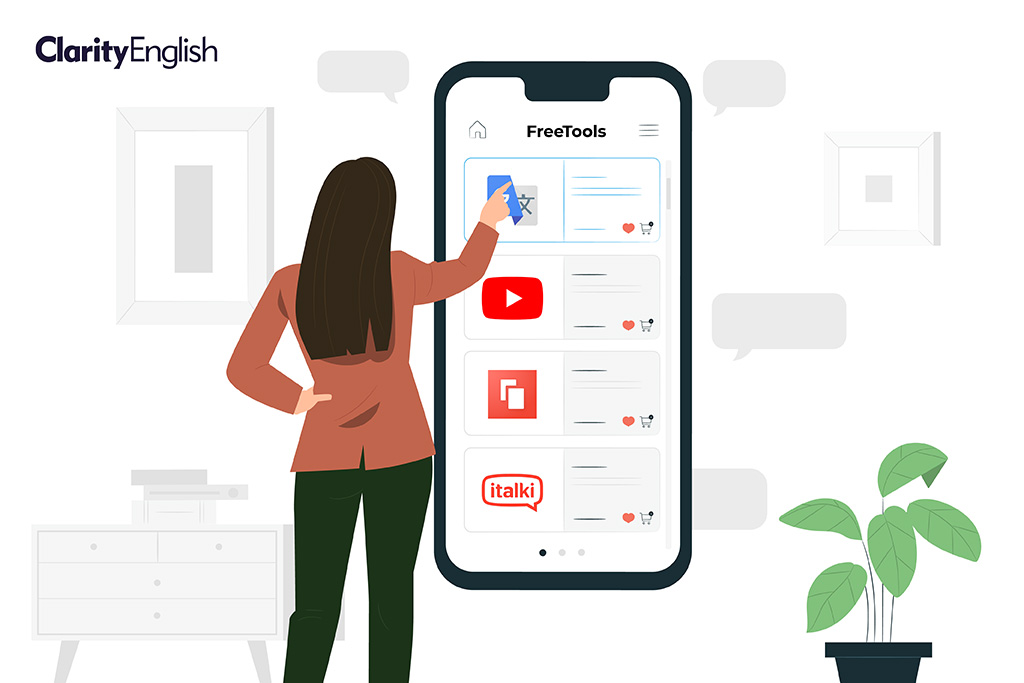In 1982, when I was studying for my French A levels, I fancied myself as something of a hardcore linguist. But in rural Surrey (UK), where I lived, it wasn’t easy to get access to authentic French. You could sometimes pick up a French station on longwave radio, but the reception was crackly and faded in and out – not unlike a wartime broadcast. There were foreign language newspapers in London, but I couldn’t afford the train fare. The one French book in the school library was a play called Phèdre by Racine, the 17th century master of the 12-syllable alexandrine – hardly the sort of thing to set an 18-year-old’s pulse racing.
How times have changed. Forty-one years later, I’m researching online learning tools available for today’s language learner. Most of these are free of charge and available at all times on the phone in your pocket, and they help with everything from vocabulary to listening to pronunciation and speaking. My research is aimed specifically at empowering Pre-A1 level migrants in English-speaking countries, and will be part of Clarity’s forthcoming program Arrivals in English, but these resources are equally useful for language learners at all levels.
Let’s look at five of them.
Google Translate (or similar). These tools will surely replace dictionaries for all but the most specialist tasks. Not only can you look up individual words, you can then experiment with them, finding collocations, building sentences and engaging with the language in a holistic and ludic manner. Consider how a Pre-A1 Hong Kong Chinese student might look up the word cheese and play with it:
起司 – cheese
起司和番茄 – cheese and tomato
起司番茄三明治 – cheese and tomato sandwich
我想要一份起司番茄三明治 – I’d like a cheese and tomato sandwich
…. 等等 – … and so on
Google Translate (again – because it’s so brilliant). You can also use translation tools to practise your pronunciation. Simply click on the microphone icon, say the word or sentence in the target language, and check the transcription. If it doesn’t match what you said (or think you said), break the utterance down and try it clause by clause, phrase by phrase or word by word until it does match – and you feel rightly pleased with your achievement.
Space is a handy vocab app based on the concept of spaced repetition, a method of reviewing material at intervals as an effective memorisation strategy. Space is organised around flash cards and is not specifically designed for language learning, but it has one major advantage over its rivals: it will read out the target lexical items in English (several accents to choose from) on one side of the flash card, and the learner’s L1 (quite a few languages available) on the other. That means that you not only read the target lexical items, but you can listen to them and repeat them as well.
iTalki is a site that matches language learners and teachers. There are lots of good reasons to enrol on a traditional in-person language course, but for many that option may be too expensive, time-consuming or inconvenient. iTalki is a good substitute. Choose your target language and (I would recommend) select the Professional teachers only filter. You will then see a list of teachers, each with their own introductory video and price. This can be as little as US$5 per lesson – although when I tried it, I noticed that the price goes up after the trial. Still, for most people it’s affordable. I tried a lesson and found it very useful and confidence-building to be able to practise speaking my target language for 30 minutes in a supportive online environment.
YouTube. A number of students I’ve spoken to have highlighted the subtitles (closed caption) feature on YouTube music videos. They like to listen to the song without subtitles, then click the subtitles on, and listen again. They then pause frame by frame and look up the words or phrases they don’t know. These students find it highly motivating to understand the lyrics of their favourite songs. And as any teacher knows, motivation is the ultimate indicator of success in language learning.
In a generation and a half, it’s astounding how far we’ve come from scratchy radio broadcasts and week-old copies of Le Figaro. Technology is an absolute blessing for language learners – and as teachers and materials writers, our duty is to make sure they understand that, and are empowered to take advantage of it.
Arrivals in English is a program designed to equip Pre-A1 learners of English with essential language for real-life scenarios. These include filling in a form, shopping for groceries, applying for work and more. You will be able to access the British English version in early 2024, with Australian English and North American English versions to follow soon after. If you are interested in learning more about the program please contact us at editorial@claritysupport.com

